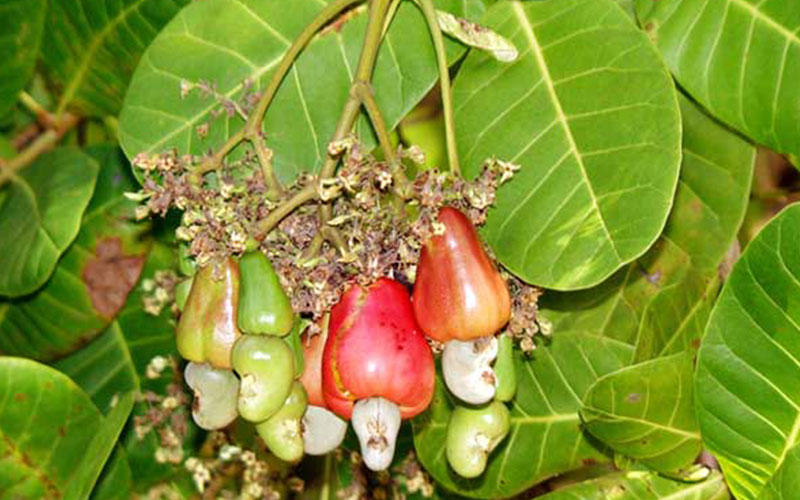

This is mostly found in Kerala cuisine, typically in the avial, a dish that contains several vegetables, grated coconut, turmeric and green chilies. The kernel is extracted (it is still corrosive at this stage, so gloves may be required) and soaked in turmeric water to get rid of the corrosive material before use. The shell is soft at this stage, and can be cut into two with a knife. The cashew nut can also be harvested in its tender form, when the shell has not hardened and is green in color. Cashew nuts are sold covered in chocolate, but less often than the cheaper peanuts and almonds.Ĭashew nuts also factor in Thai cuisine and Chinese cuisine, generally in whole form, and in Indian cuisine, often ground into sauces such as shahi korma, and also used as garnish in Indian sweets and desserts. The cashew nut is a popular snack, and its rich flavor means that it is often eaten on its own, lightly salted or sugared.
#About cashew trees skin#
The seed is surrounded by a double shell containing an allergenic phenolic resin, anacardic acid, a potent skin irritant chemically related to the more well known allergenic oil urushiol which is also a toxin found in the related poison ivy.

Although a nut in the culinary sense, in the botanical sense the nut of the cashew is a seed. Within the true fruit is a single seed, the cashew nut. The drupe develops first on the tree, and then the pedicel expands into the cashew apple. The true fruit of the cashew tree is a kidney or boxing-glove shaped drupe that grows at the end of the cashew apple. The pulp of the cashew apple is very juicy, but the skin is fragile, making it unsuitable for transport. It is edible, and has a strong "sweet" smell and a sweet taste. Called the cashew apple, better known in Central America as "maranon", it ripens into a yellow and/or red structure about 5 to 11 cm long. What appears to be the fruit is an oval or pear-shaped structure that develops from the pedicel and the receptacle of the cashew flower. The fruit of the cashew tree is an accessory fruit (sometimes called a pseudocarp or false fruit). The flowers are produced in a panicle or corymb up to 26 cm long, each flower small, pale green at first then turning reddish, with five slender, acute petals 7 to 15 mm long. The leaves are spirally arranged, leathery textured, elliptic to obovate, 4 to 22 cm long and 2 to 15 cm broad, with a smooth margin. The tree is small and evergreen, growing to 10 to 12m (32 ft) tall, with a short, often irregularly shaped trunk. It is now widely grown in tropical climates for its cashew nuts and cashew apples. Its English name derives from the Portuguese name for the fruit of the cashew tree, caju, which in turn derives from the indigenous Tupi name, acaju. The cashew is a tree in the family Anacardiaceae. Here is some detailed information on the cashew tree. Cashew Scientific Name: Cinnamomum Zeylanicum Cashew Trees, Facts and Info on the Cashew Tree


 0 kommentar(er)
0 kommentar(er)
